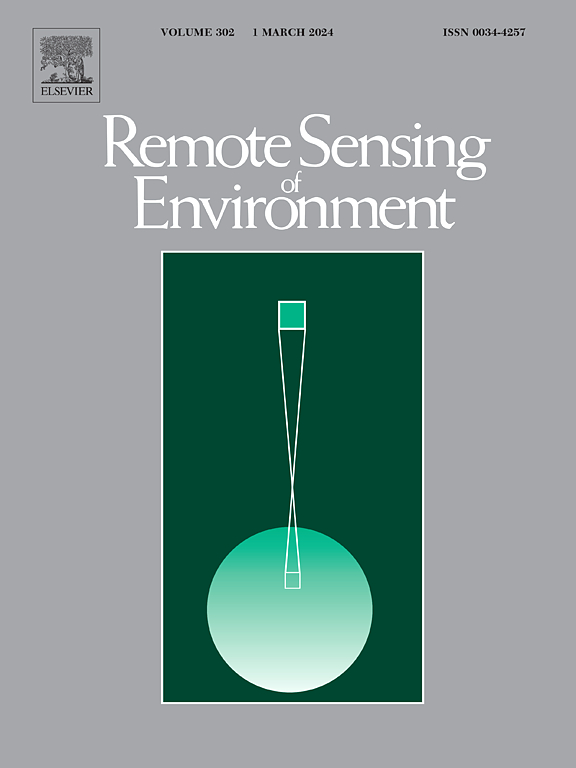Canopy BRDF differentiation on LAI based on Monte Carlo Ray Tracing
IF 11.4
1区 地球科学
Q1 ENVIRONMENTAL SCIENCES
引用次数: 0
Abstract
Radiative transfer models (RTM) enable the simulation of remote sensing observations and can therefore be useful for sensitivity analyses and model inversions, for example to determine the biophysical properties of vegetation. For this purpose, the calculation of observation derivatives is crucial. In this study, we propose to differentiate vegetation RTM based on Monte Carlo Ray tracing, PolVRT, as a function of the leaf area index (LAI). The variation of LAI is done considering the average leaf area (). The difference between simulations corresponding to two areas close to each other ( and ) is used to calculate the derivative as the limit when approaches . We propose in this work to adjust traced paths for to simulate (), but such paths are weighted to correct their bias. This weighting is based on the technique of Importance Sampling. It increases the weighting of likely paths and conversely decreases it of unlikely ones. We have made a correction for the hot spot effect, since there is a strong dependency between the incident and backscattered paths. Our approach performances are verified using some discrete ROMC scene parameters and compared with the standard finite difference technique.
基于蒙特卡罗光线追踪的LAI冠层BRDF分异
辐射传输模式(RTM)能够模拟遥感观测,因此可用于敏感性分析和模式反演,例如确定植被的生物物理特性。为此,计算观测导数是至关重要的。在这项研究中,我们提出了基于蒙特卡罗射线追踪的植被RTM (PolVRT)作为叶面积指数(LAI)的函数来区分植被RTM。LAI的变化考虑平均叶面积(u)。当u ‘接近u时,两个相邻区域(u和u ’)对应的模拟之间的差异被用来计算导数作为极限。我们在这项工作中提出调整u的跟踪路径来模拟(u '),但这些路径被加权以纠正它们的偏差。这种加权是基于重要性抽样技术。它增加了可能路径的权重,反过来减少了不太可能路径的权重。我们对热点效应做了修正,因为在入射路径和反向散射路径之间有很强的依赖性。用离散ROMC场景参数验证了该方法的性能,并与标准有限差分技术进行了比较。
本文章由计算机程序翻译,如有差异,请以英文原文为准。
求助全文
约1分钟内获得全文
求助全文
来源期刊

Remote Sensing of Environment
环境科学-成像科学与照相技术
CiteScore
25.10
自引率
8.90%
发文量
455
审稿时长
53 days
期刊介绍:
Remote Sensing of Environment (RSE) serves the Earth observation community by disseminating results on the theory, science, applications, and technology that contribute to advancing the field of remote sensing. With a thoroughly interdisciplinary approach, RSE encompasses terrestrial, oceanic, and atmospheric sensing.
The journal emphasizes biophysical and quantitative approaches to remote sensing at local to global scales, covering a diverse range of applications and techniques.
RSE serves as a vital platform for the exchange of knowledge and advancements in the dynamic field of remote sensing.
 求助内容:
求助内容: 应助结果提醒方式:
应助结果提醒方式:


